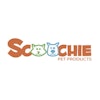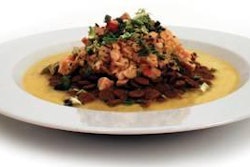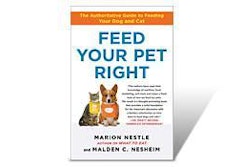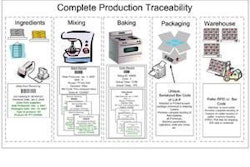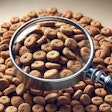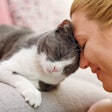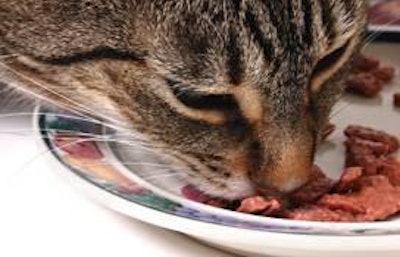
The average age of dogs and cats continues to rise. Over the past 10 years in the US, there has been nearly a two-fold increase—from 24 to 47%—in the proportion of cats older than 6 years (Stratton-Phelps, 1999). Between one-third of dogs and one-half of cats are 7 years or older (Lund et al., 1999). According to the Morris Animal Foundation, the top three causes of death in both dogs and cats are renal, cancer and cardiovascular disease.
In light of the advancing age of the pet population, optimal nutrition should aim to decrease the risks for these diseases and other age-related problems such as obesity, bone loss and lean muscle mass loss. Recent research in geriatric cats has demonstrated that by formulating to an optimal lysine:calorie ratio as well as to an ideal protein content, dietary protein could be lowered without causing lean muscle mass loss.
Similar to pets, the top two leading causes of death in humans are cardiovascular disease and cancer, while renal disease ranks ninth (Xu et al., 2010). With people and pets, there is much debate concerning the detrimental effects of high-protein diets. These risks include renal disease, cancer, bone loss and increased kidney stones (DRI, 2005).
Aging-associated loss of lean muscle mass in companion animals is a concern as it is in humans (Janssen et al., 2005; Laflamme, 2005). Reductions in muscle mass due to aging typically result in decreases in activity and general health. Loss of muscle is also often associated with other age-related diseases such as obesity, diabetes and osteoporosis (Janssen; Layman, 2009).
Supplying an appropriate amount of the essential amino acids relative to lysine (protein quality) rather than protein quantity is required for the synthesis of new muscle protein and to reduce protein degradation (Baker et al., 1991; Frantz et al., 2007 ).
A study by N.Z. Frantz and colleagues (2007) illustrates the importance of balancing a diet according to ideal amino acid profile as opposed to absolute protein amount. The trial involved 40 geriatric cats, 12 years or older. Cats were assigned to one of four diets (designated A-D) representing four US commercial petfood manufacturers. Blood samples were obtained at baseline, one and three months, and body composition was measured using dual energy x-ray absorptiometry at baseline and three months.
As shown in Figure 1, diet D contained the highest protein and phosphorous (P) levels. Cats fed this diet had significantly higher bone loss as measured by bone mineral content (BMC), as well as higher blood urea nitrogen and creatinine compared to cats fed the other diets. Cats fed diet B also had higher creatinine compared to the groups on diets A and C.
Reductions of both protein and P have been shown previously to delay the progression of renal disease (Elliot et al., 2000; Ross et al., 2006). As shown in Figures 1 and 2, there was a linear effect of dietary protein on bone loss: With increasing protein, BMC decreased. At protein concentrations of 26% or less, positive BMC was attained.
As shown in Figure 3, only cats fed diet B gained lean muscle, whereas the other cats lost (diets A and C) or maintained (diet D) lean muscle over the 90-day trial. The lean muscle loss was a linear function of the lysine:calorie ratio. Above approximately 500 mg lysine/100 kcal, positive lean was achieved. Diet B not only had the highest lysine:calorie ratio; it was the only diet of the four formulated to an ideal protein ratio.
Loss of lean muscle mass is a serious concern among aging companion animals as well as during weight loss. In foods formulated for promoting weight loss, dietary protein is often increased to prevent the loss of lean muscle mass. However, formulating to an ideal protein content and optimal lysine:calorie ratio appears to be a more effective strategy to prevent or minimize lean muscle loss while decreasing risk of kidney disease and bone loss.
